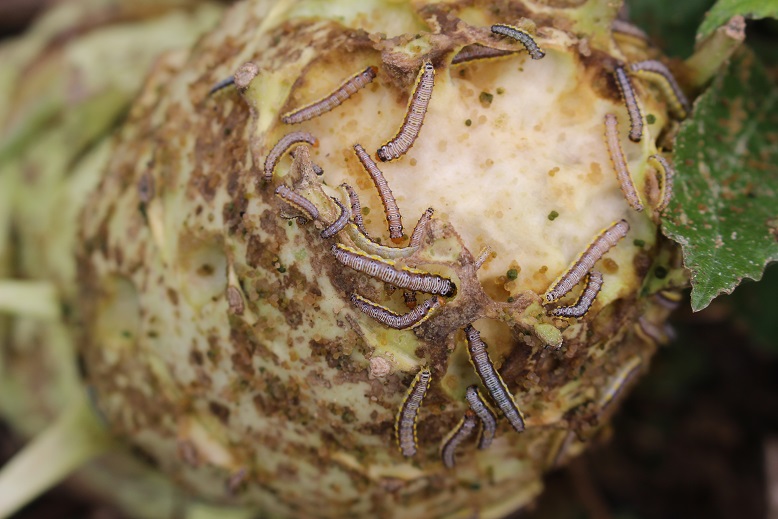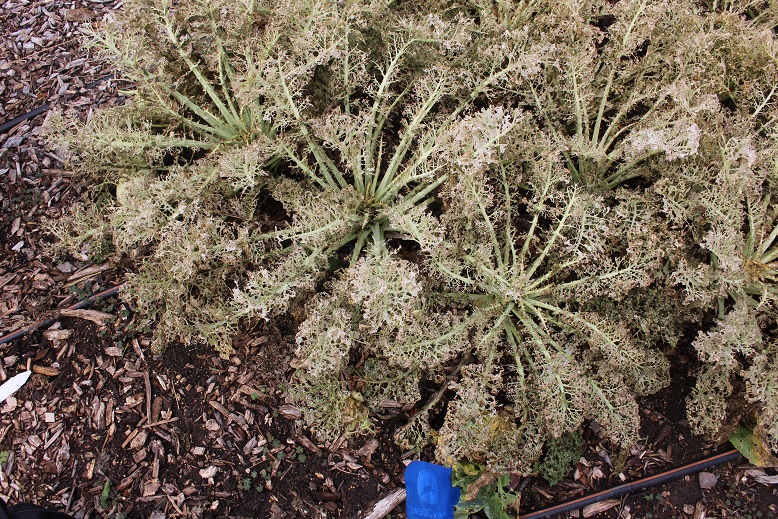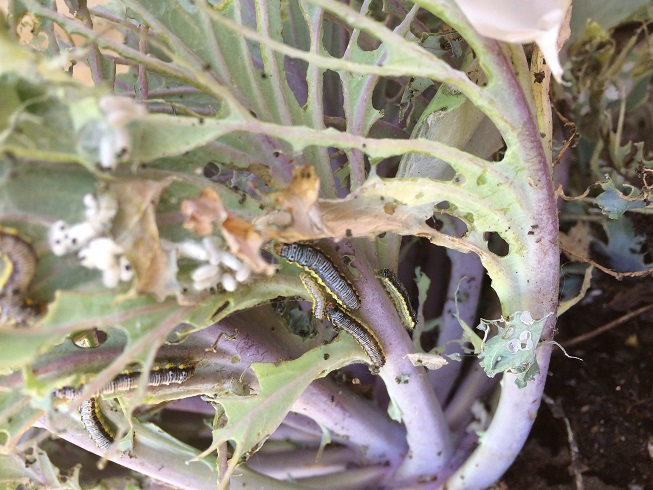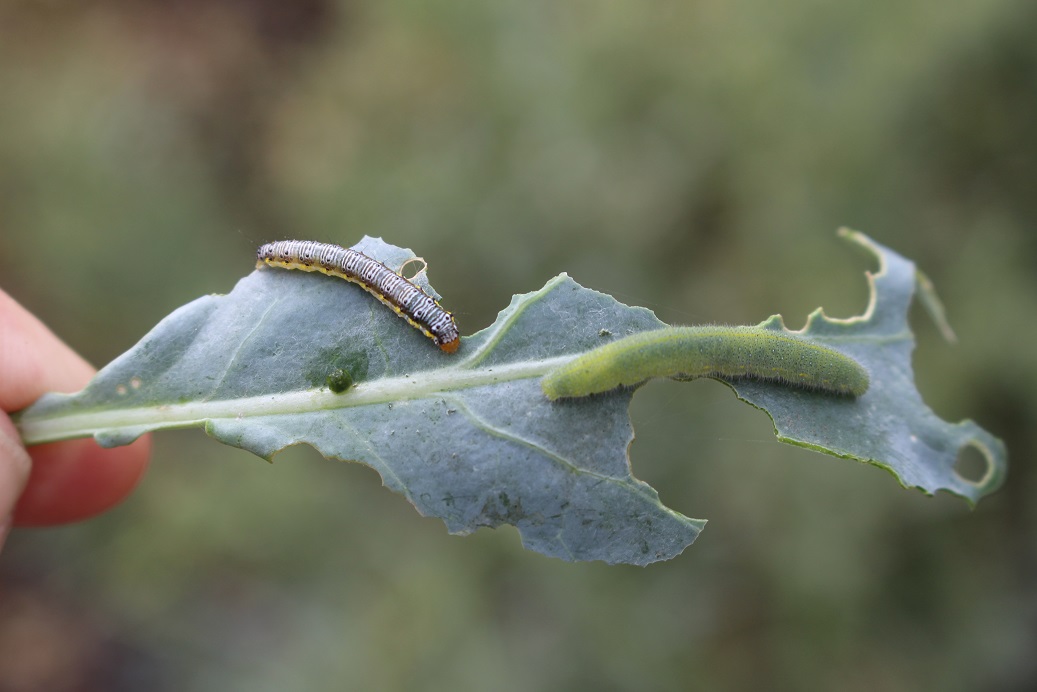–by Dr. Raymond Cloyd
We have received inquiries regarding caterpillars feeding, and completely devouring cole crops, including: collards, Brussel sprouts, kohlrabi, turnip, and kale (Figures 1 through 3).
Figure 1. Cross-Striped Cabbageworms Feeding (Author–Raymond Cloyd, KSU, Department of Entomology)
Figure 2. Damage Caused By Cross-Striped Cabbageworm (Author–Raymond Cloyd, KSU, Department of Entomology)
Figure 3. Cross-Striped Cabbageworm Larvae Feeding (Author–Raymond Cloyd, KSU, Department of Entomology)
These are the cross-striped cabbageworm (Evergestis rimosalis). The caterpillars have black and white striping on the back, two dots on each abdominal segment, and yellow lines that extend the length of the body on both sides (Figures 4 and 5).
Figure 4. Cross-Striped Cabbageworm (Author–Raymond Cloyd, KSU, Department of Entomology)
Figure 5. Cross-Striped Cabbageworm (Author–Scott Eckert, Harvey County Extension, Newton, KS)
They are not a common insect pest but this year they have been a problem on many cole crops. The cross-striped cabbageworm may be found feeding along with the imported cabbageworm (Artogeia rapae) (Figure 6).
Figure 6. Cross-Striped Cabbageworm and Imported Cabbageworm Larvae (Author–Raymond Cloyd, KSU, Department of Entomology)
There is really no justification for applying an insecticide once plants have been heavily-damaged. Therefore, the best option is to hand-pick cross-striped cabbageworm caterpillars and place into a container of soapy water.





